
Moodle 1.9: The English Teacher's Cookbook
¥90.46
This book follows a cookbook style, which will help you achieve outstanding results using ready-to-use recipes for reading comprehension, writing, and composition holding hands with Moodle 1.9 in the Web 2.0 Era. Each recipe is unique; some deal with similar teaching techniques, but they show how to develop the same technique using different software, situations, or topics. Images, videos, poems, songs, artists, classic stories, cartoons, superheroes, painting, the environment, and comics are inserted into the Moodle course, in order to be used as either prewriting or writing activities. If you are an English teacher who wants to discover practical, funny, and engaging activities to insert in your course, this is a perfectly designed book for you. It will help you to use different techniques in the teaching of reading comprehension, writing, and composition using a great variety of resources from the free and open source software available in the Web and interesting websites as well as social networks. You need basic experience with Moodle 1.9 or 1.9.5, as well as installation and configuration procedures.
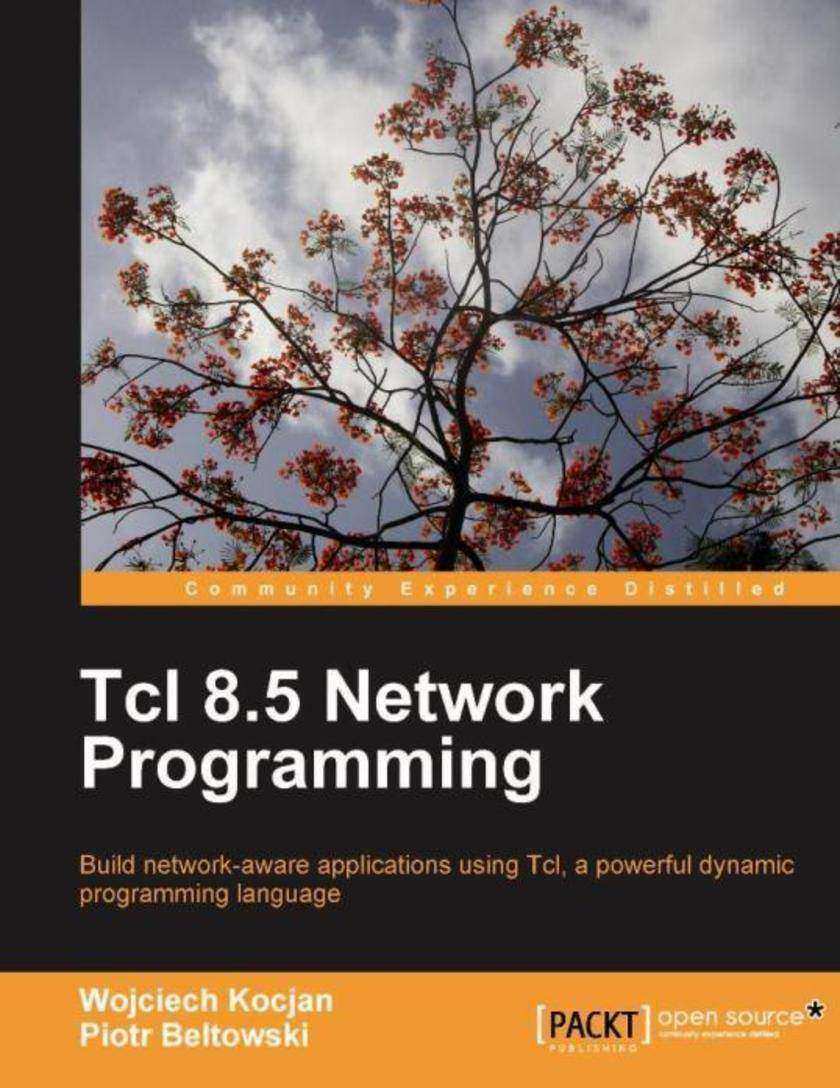
Tcl 8.5 Network Programming
¥90.46
The book is written so that both experienced and novice Tclers can find useful information inside. It starts with quick introduction to Tcl and its networking support for those who are less familiar with them. Authors focus on showing practical, yet simple examples for each module and command described so that reader understands how to use them when solving the real life problems. The examples given are useful programs that try to solve real-world needs. All sample programs are clear and concise yet nothing essential is left out and the programming style focuses on readability rather than on stylistic rigor or efficiency. This book is for Tcl developers with basic network programming concepts, who want to add networking capabilities to their applications. Working knowledge of Tcl and basic experience of network protocols will be useful. The reader should be familiar with basic concepts used in modern networking – keywords like TCP, HTTP or XML should not be a mystery. The book does not require advanced knowledge of Tcl – the first chapters will swiftly introduce the reader into it, allowing refreshing the information or gaining a quick overview of the Tcl language abilities.
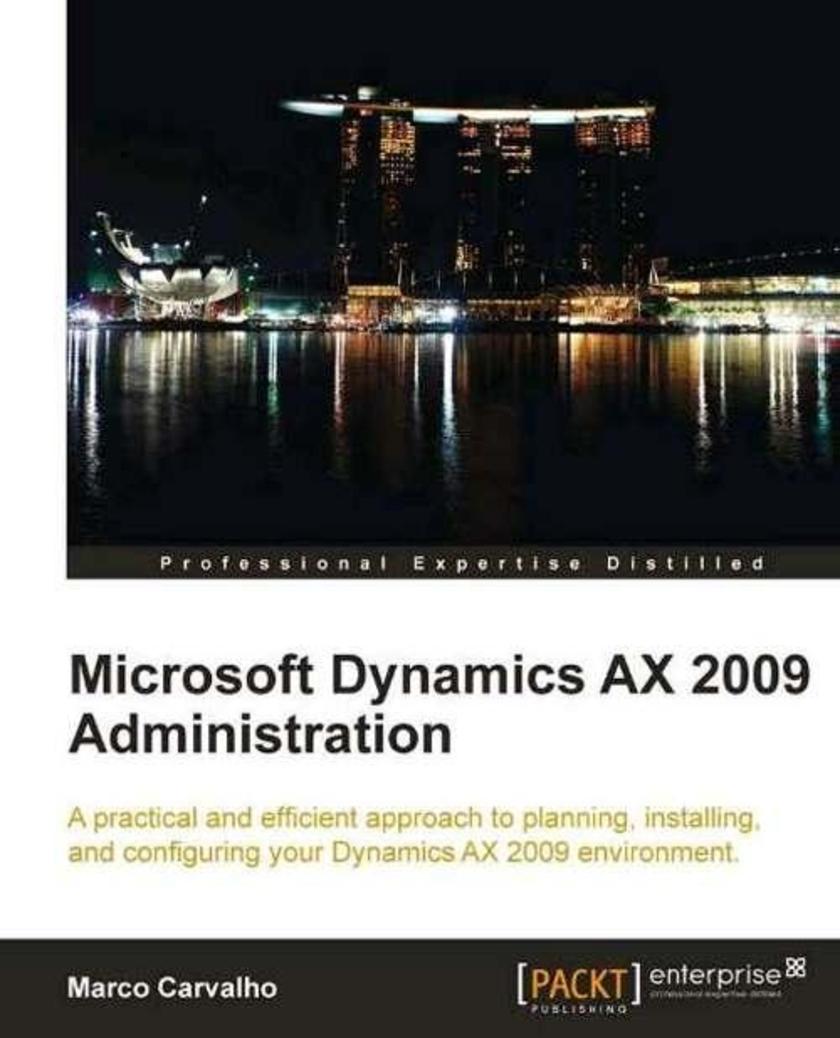
Microsoft Dynamics AX 2009 Administration
¥90.46
A practical tutorial, this book shows you how to set up and configure Dynamics AX 2009 and then how to improve and maintain its performance with clear step-by-step instructions, enabling Dynamics AX to fit your company's needs. If you are a network administrator or IT personnel charged with setting up and configuring Dynamics AX 2009 in your company, then this book is for you. A basic knowledge of Dynamics AX 2009 and general Windows Server Administration is required and familiarity with maintaining a SQL Server database server. Additionally, if you are a VAR tasked with implementing Dynamics AX into companies, then this book will provide you with a good overview and details of the whole Dynamics AX 2009 system.
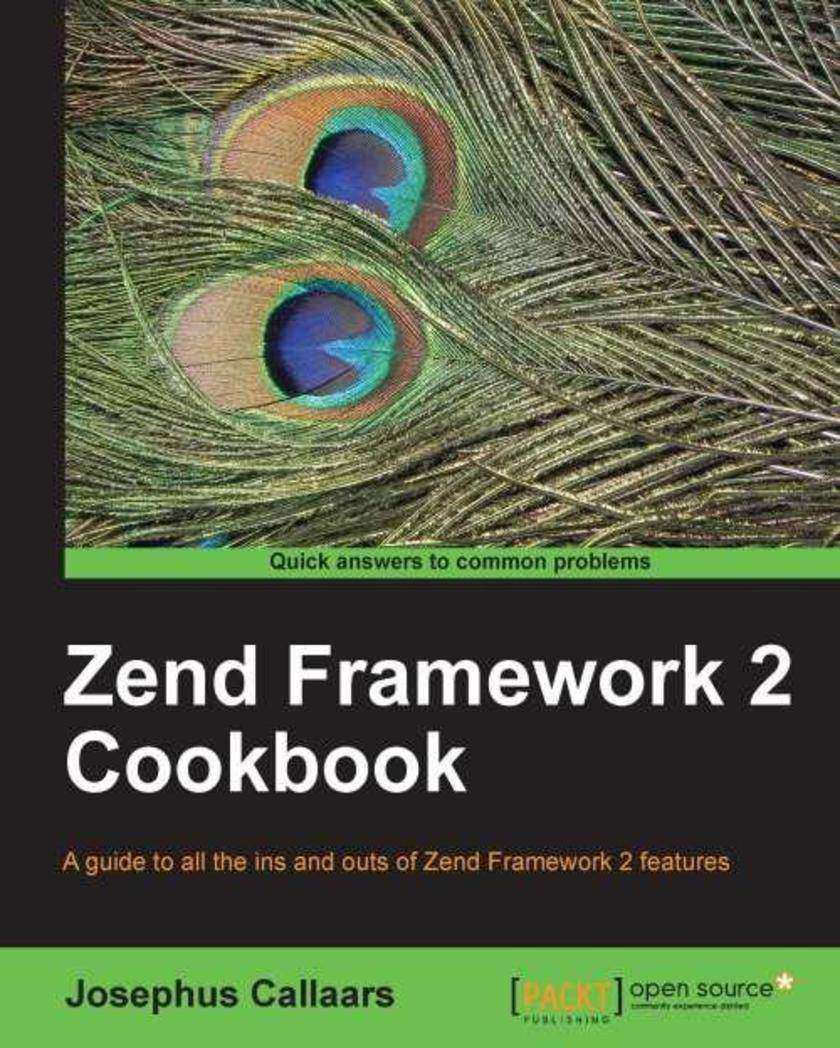
Zend Framework 2 Cookbook
¥90.46
This book is written in a practical, cookbook style with numerous examples and recipes. This style allows you to go both directly to your topic of interest or follow topics throughout a chapter to gain an in-depth knowledge of certain areas.'Zend Framework 2 Cookbook" is for PHP developers who are fairly advanced in programming in PHP. It will also be useful for developers who have a keen interest in expanding their knowledge outside the boundaries of simply *ing pages together. As unit testing and MVC will be discussed, it is beneficial for the reader to know what these technologies are, although experience with developing applications is not necessarily essential.
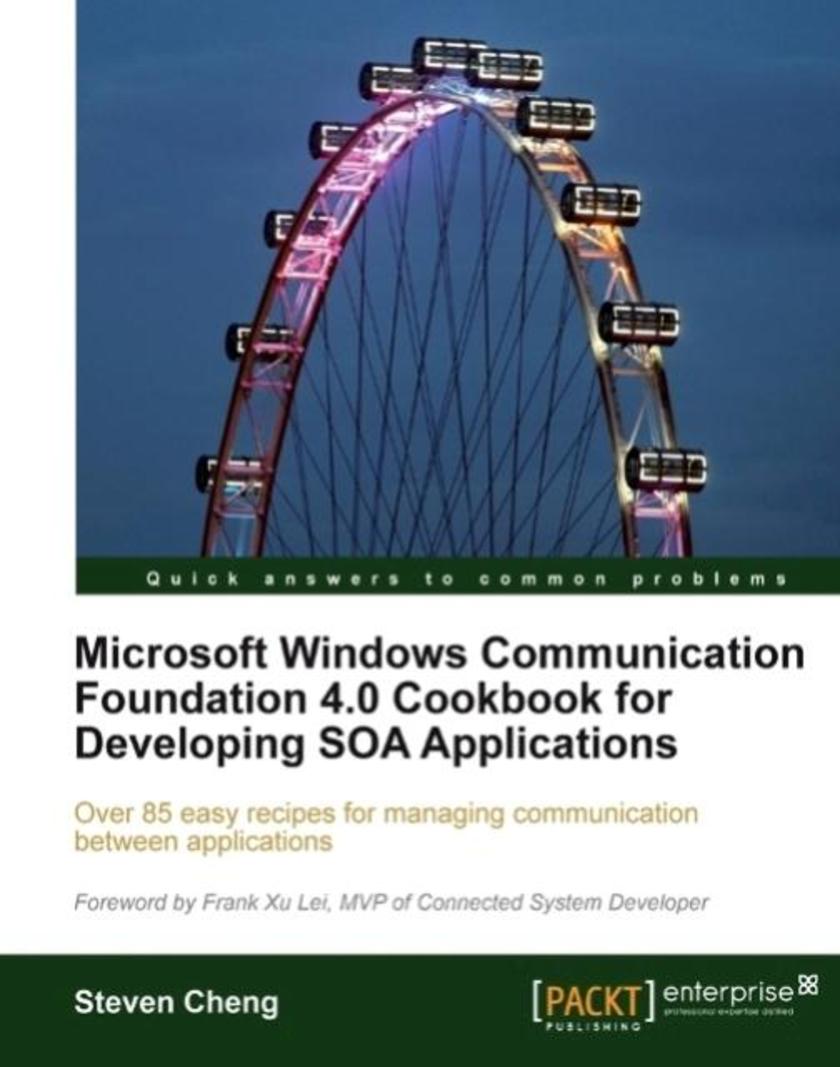
Microsoft Windows Communication Foundation 4.0 Cookbook for Developing SOA Appli
¥90.46
The recipes in this book are easy to understand and follow as the author discusses real-world scenarios. The range of topics covered in this book will bring out the forward-thinking WCF developer in you. It is not a comprehensive reference to the whole of WCF, but a practical guide that boosts proficiency when working with the various features of WCF. The examples are supported by relevant background information for ease of understanding. If you work with Windows Communication Foundation 4.0 and you want to be efficient when working with WCF features such as interoperability, proxy generation, and security, you will find this book very useful. With this book you will be able to find quick and handy solutions for various kinds of service development scenarios using Microsoft Windows Communication Foundation 4.0. To follow the recipes you will need to be comfortable with .NET Framework, C# programming, and the basics of SOA and how to develop them.
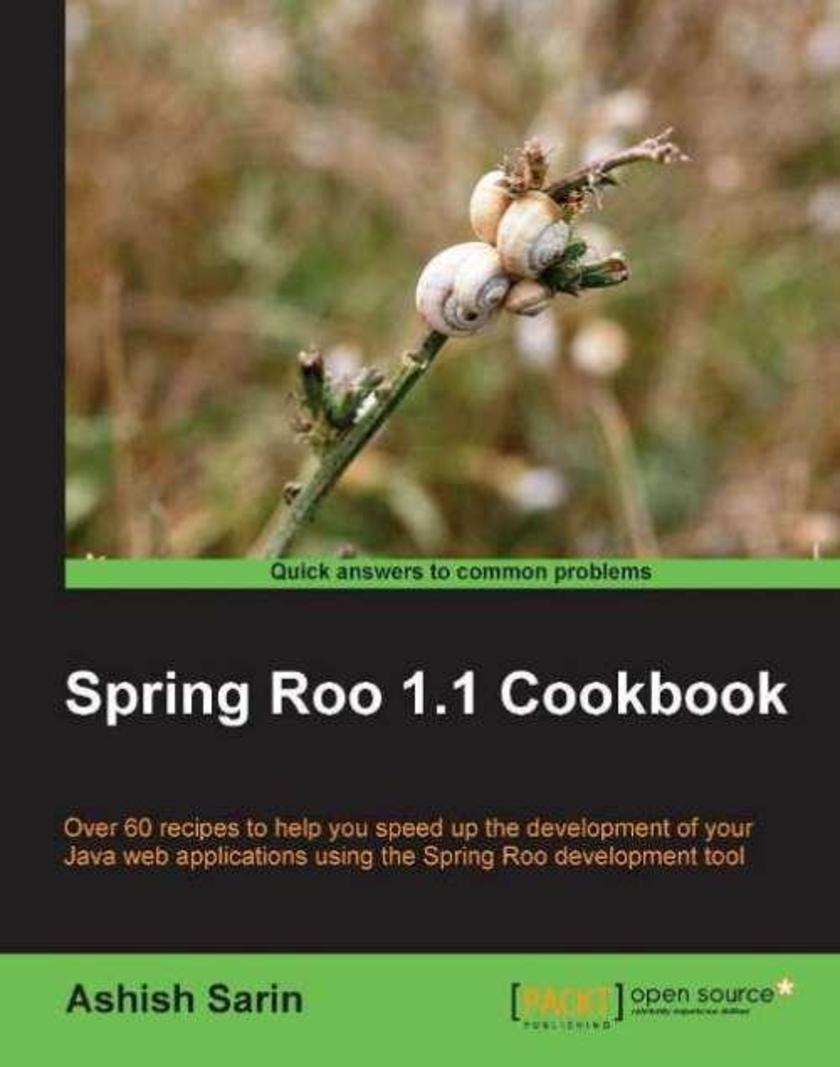
Spring Roo 1.1 Cookbook
¥90.46
This is a cookbook full of recipes with the essential code explained clearly and comprehensively. The recipes are organized so well that you will have no problems in using this cookbook as a reference too. Spring Roo 1.1 Cookbook is for developers new to the Spring Roo tool but with experience developing applications using Spring framework, AspectJ, JPA, GWT, and technologies/frameworks supported by Spring Roo. If you are new to the Spring framework, then it is recommended to refer to a text covering Spring, before reading this Cookbook.
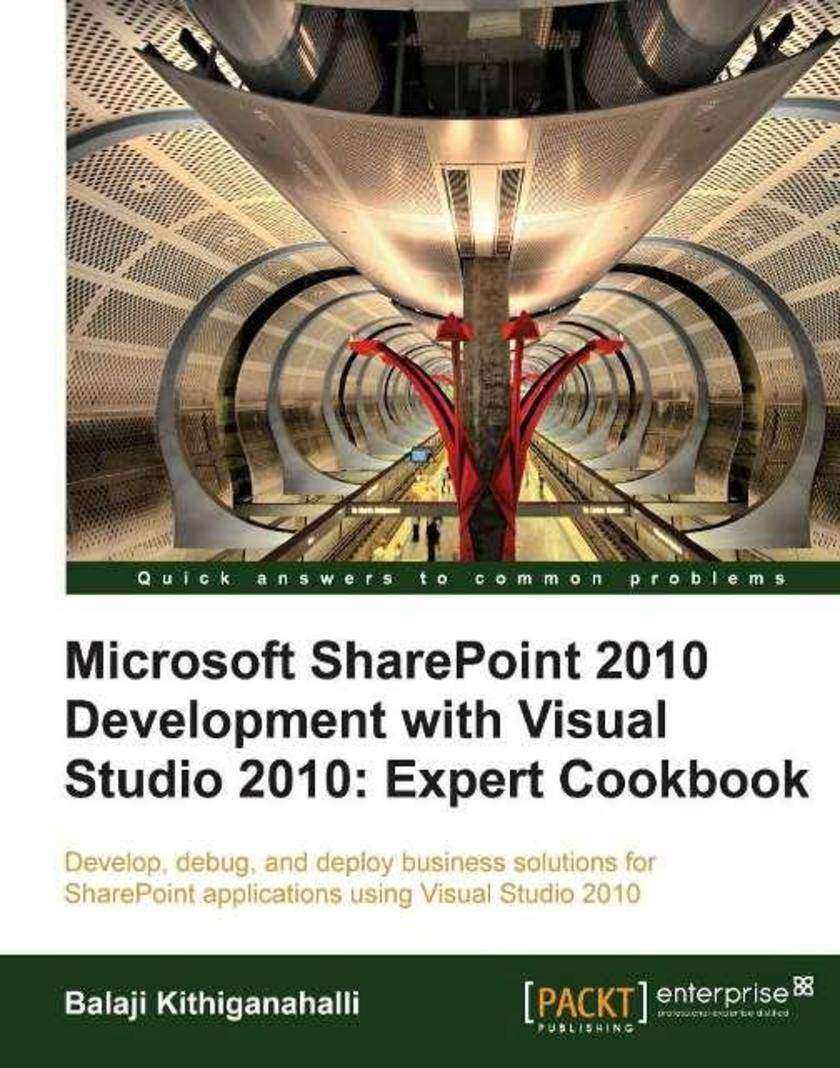
Microsoft SharePoint 2010 Development with Visual Studio 2010: Expert Cookbook
¥90.46
This book follows a step-by-step approach to learning the building blocks of SharePoint application development. This book focuses on SharePoint 2010 development using Visual studio 2010. The book provides a hands-on approach to solving problems and creating business solutions for enhancing SharePoint 2010 environment. This book is for .NET developers to understand the building blocks for SharePoint 2010. Although the book can be used by beginners, it is recommended to have understanding of the previous versions of SharePoint. Developing SharePoint solutions needs solid understanding of ASP.NET architecture. The book assumes that the reader is familiar with ASP.NET technology and development concepts.

Windows Phone 7 Silverlight Cookbook
¥90.46
The book is written in a cookbook style, presenting examples in the style of recipes, allowing you to go directly to your topic of interest, or follow topics throughout a chapter to gain in-depth knowledge. All levels of developers and designers will be able to utilize this book. The language and examples are written for beginners but there are plenty of deeper concepts to explore and code to master.
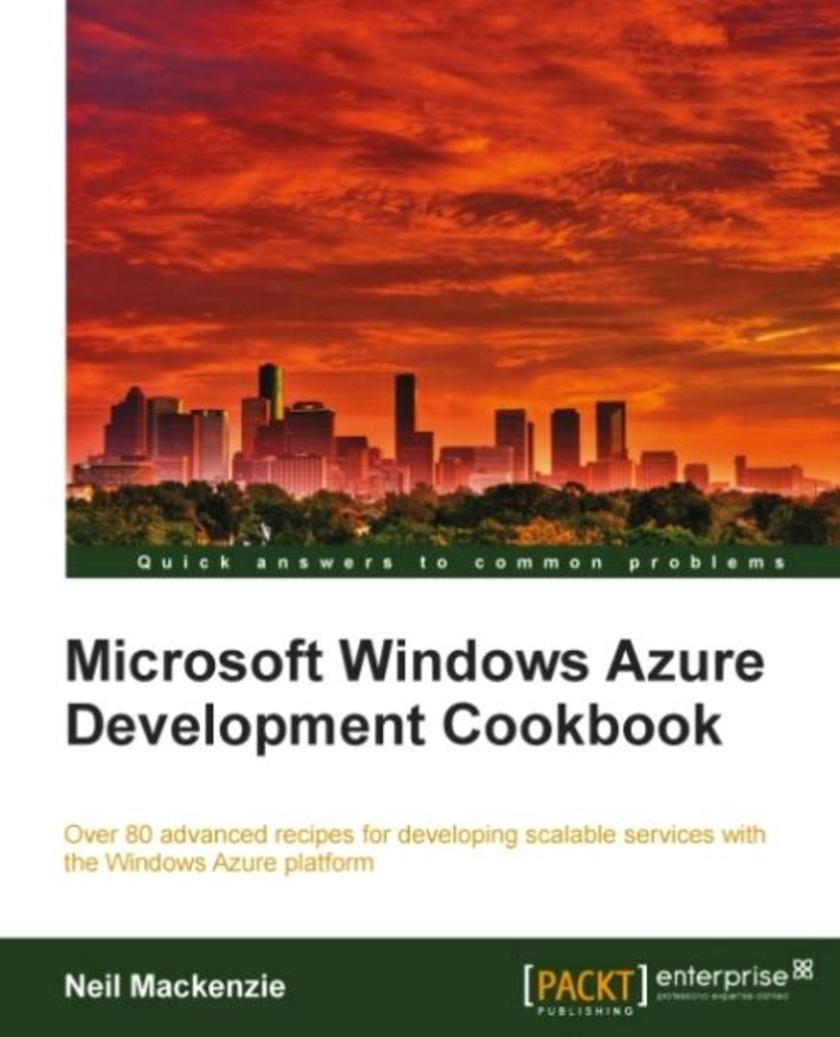
Microsoft Windows Azure Development Cookbook
¥90.46
This cookbook offers practical, immediately usable task-based recipes covering a wide range of advanced development techniques for building highly scalable cloud-based services on the Windows Azure platform. It shows you how to improve these services and how to solve particular problems/scenarios when developing them on the Windows Azure platform. The solutions are presented in a clear step-by-step manner and explained in great detail, which makes them good learning material for everyone who has experience of the Windows Azure platform and wants to improve. The book is designed so that you can read it chapter by chapter or refer to recipes in no particular order. If you are an experienced Windows Azure developer or architect who wants to understand advanced development techniques when building highly scalable services using the Windows Azure platform, then this book is for you. You should have some exposure to Windows Azure and need basic understanding of Visual Studio, C#, SQL, .NET development, XML, and Web development concepts (HTTP, Services).
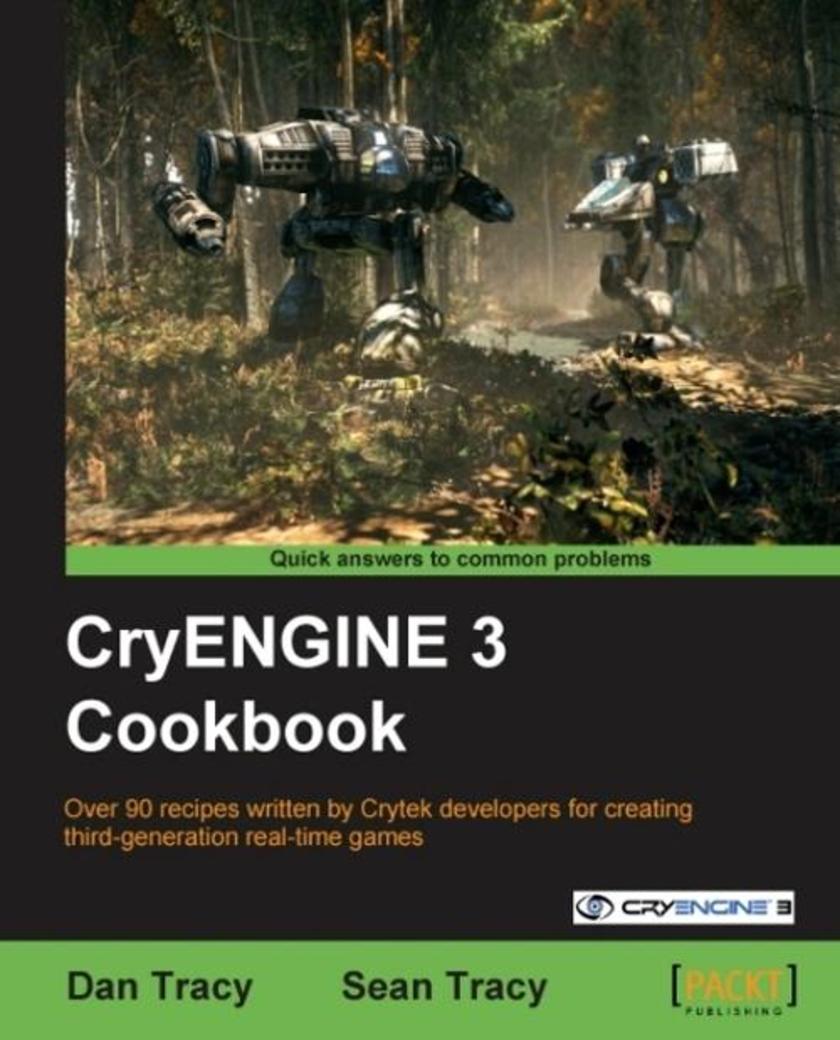
CryEngine 3 Cookbook
¥90.46
Written in a cookbook style, this book offers solutions using a recipe based approach. Each recipe contains step-by-step instructions followed by an analysis of what was done in each task and other useful information. The cookbook approach means you can dive into whatever recipes you want in no particular order. The CryENGINE3 Cookbook is written to be accessible to all developers currently using the CryENGINE3. It also explores the depth and power of the CryENGINE3 and is a useful guide to follow when becoming familiar with this award winning middle-ware game engine. This book is written with the casual and professional developer in mind. Fundamental knowledge of some Digital Content Creation Tools, like Photoshop and 3d Studio Max is required. The Software Development Kit version of the CryENGINE is used for all examples, so the reader should have a version of the development kit to follow the recipes contained in this book.
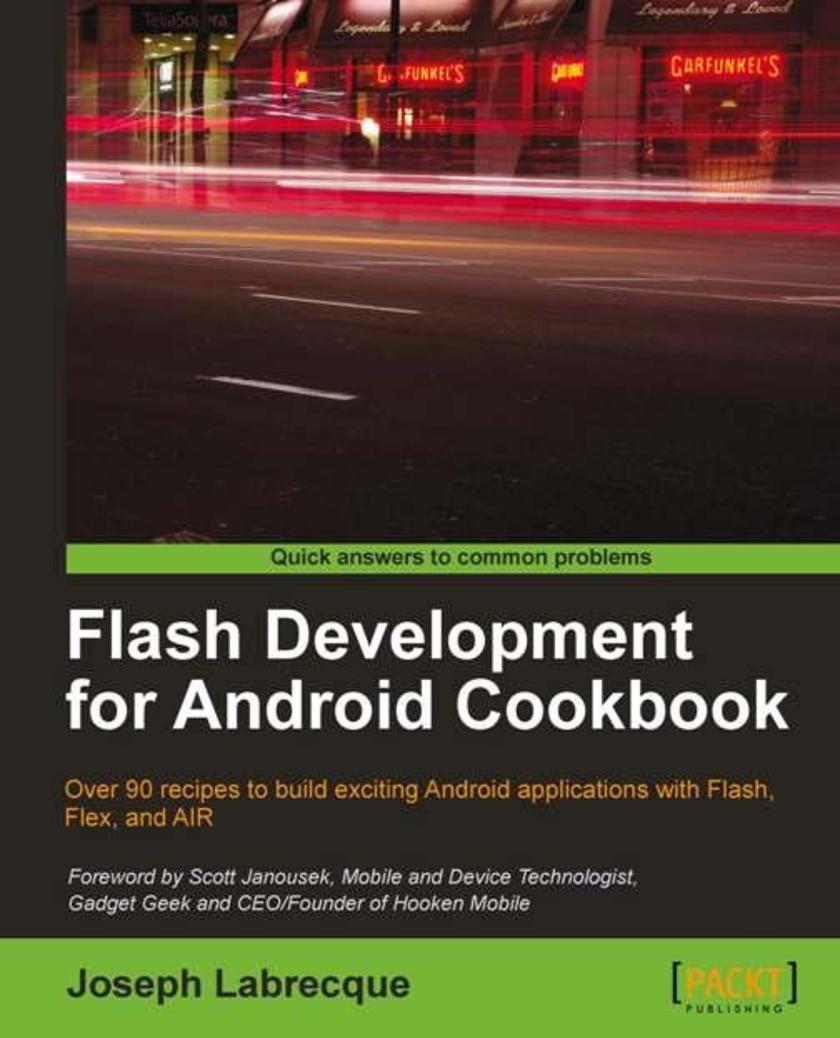
Flash Development for Android Cookbook
¥90.46
Written in cookbook style, this book offers solutions to all common Flash Android development problems through recipes. Each recipe contains step-by-step instructions followed by analysis of what was done in each task and other useful information. The book is designed so that you can read it chapter by chapter, or you can look at the list of recipes and refer to them in no particular order. This book contains recipes covering a variety of topics from the very simple to those that are more advanced. If you are a seasoned Flash developer, this book will get you quickly up to speed with what is possible with Android. For those who are new to Flash, welcome to the world of visually rich, rapid application development for mobile Android devices! If you have any interest in Flash development for Android, this book is for you.
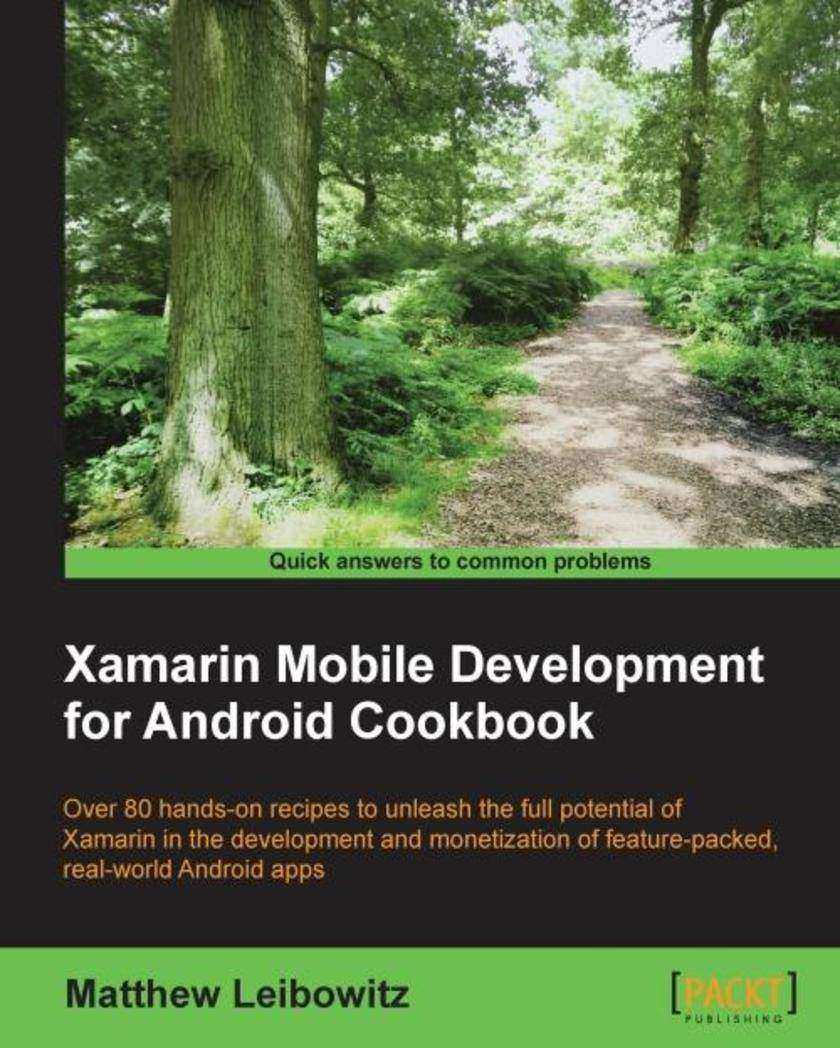
Xamarin Mobile Development for Android Cookbook
¥90.46
Over 80 hands-on recipes to unleash full potential for Xamarin in development and monetization of feature-packed, real-world Android apps About This Book Create a number of Android applications using the Xamarin Android platform Extensively integrate your Android devices with other Android devices to enhance your app creation experience A comprehensive guide packed with real-world scenarios and pro-level practices and techniques to help you build successful Android apps Who This Book Is For If you are a Xamarin developer who wants to create complete Android applications with Xamarin, then this book is ideal for you. No prior knowledge of Android development is needed, however a basic knowledge of C# and .NET would be useful. What You Will Learn Install and use Xamarin.Android with Xamarin Studio and Visual Studio Design an app’s user interface for multiple device configurations Store and protect data in databases, files, and on the cloud Utilize lists and collections to present data to the user Communicate across the network using NFC or Bluetooth Perform tasks in the background and update the user with notifications Capture and play multimedia, such as video and audio, with the camera Implement In-App Billing and Expansion Files and deploy to the store In Detail Xamarin is used by developers to write native iOS, Android, and Windows apps with native user interfaces and share code across multiple platforms not just on mobile devices, but on Windows, Mac OS X, and Linux. Developing apps with Xamarin.Android allows you to use and re-use your code and your skills on different platforms, making you more productive in any development. Although it’s not a write-once-run-anywhere framework, Xamarin provides native platform integration and optimizations. There is no middleware; Xamarin.Android talks directly to the system, taking your C# and F# code directly to the low levels. This book will provide you with the necessary knowledge and skills to be part of the mobile development era using C#. Covering a wide range of recipes such as creating a simple application and using device features effectively, it will be your companion to the complete application development cycle. Starting with installing the necessary tools, you will be guided on everything you need to develop an application ready to be deployed. You will learn the best practices for interacting with the device hardware, such as GPS, NFC, and Bluetooth. Furthermore, you will be able to manage multimedia resources such as photos and videos captured with the device camera, and so much more! By the end of this book, you will be able to create Android apps as a result of learning and implementing pro-level practices, techniques, and solutions. This book will ascertain a seamless and successful app building experience. Style and approach This book employs a step-by-step approach to Android app creation, explained in a conversational and easy-to-follow style. A wide range of examples are listed to ensure a complete understanding of how to deploy competent apps on the Android market.
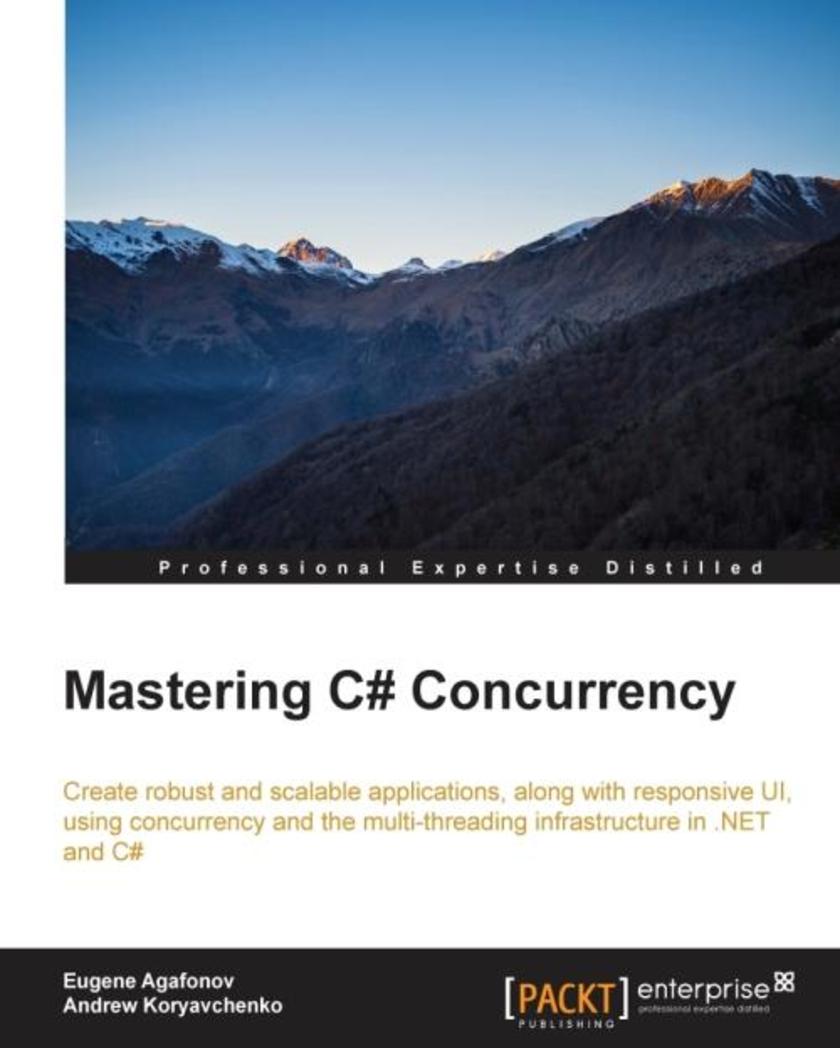
Mastering C# Concurrency
¥90.46
Create robust and scalable applications along with responsive UI using concurrency and the multi-threading infrastructure in .NET and C#About This BookLearn to combine your asynchronous operations with Task Parallel LibraryMaster C#’s asynchronous infrastructure and use asynchronous APIs effectively to achieve optimal responsiveness of the applicationAn easy-to-follow, example-based guide that helps you to build scalable applications using concurrency in C# Who This Book Is For If you are a C# developer who wants to develop modern applications in C# and wants to overcome problems by using asynchronous APIs and standard patterns, then this book is ideal for you. Reasonable development knowledge, an understanding of core elements and applications related to the .Net platform, and also the fundamentals of concurrency is assumed.What You Will LearnApply general multithreading concepts to your application’s designLeverage lock-free concurrency and learn about its pros and cons to achieve efficient synchronization between user threadsCombine your asynchronous operations with Task Parallel LibraryMake your code easier with C#’s asynchrony supportUse common concurrent collections and programming patternsWrite scalable and robust server-side asynchronous codeCreate fast and responsible client applicationsAvoid common problems and troubleshoot your multi-threaded and asynchronous applications In Detail Starting with the traditional approach to concurrency, you will learn how to write multithreaded concurrent programs and compose ways that won't require locking. You will explore the concepts of parallelism granularity, and fine-grained and coarse-grained parallel tasks by choosing a concurrent program structure and parallelizing the workload optimally. You will also learn how to use task parallel library, cancellations, timeouts, and how to handle errors. You will know how to choose the appropriate data structure for a specific parallel algorithm to achieve scalability and performance. Further, you'll learn about server scalability, asynchronous I/O, and thread pools, and write responsive traditional Windows and Windows Store applications. By the end of the book, you will be able to diagnose and resolve typical problems that could happen in multithreaded applications.Style and approach An easy-to-follow, example-based guide that will walk you through the core principles of concurrency and multithreading using C#.
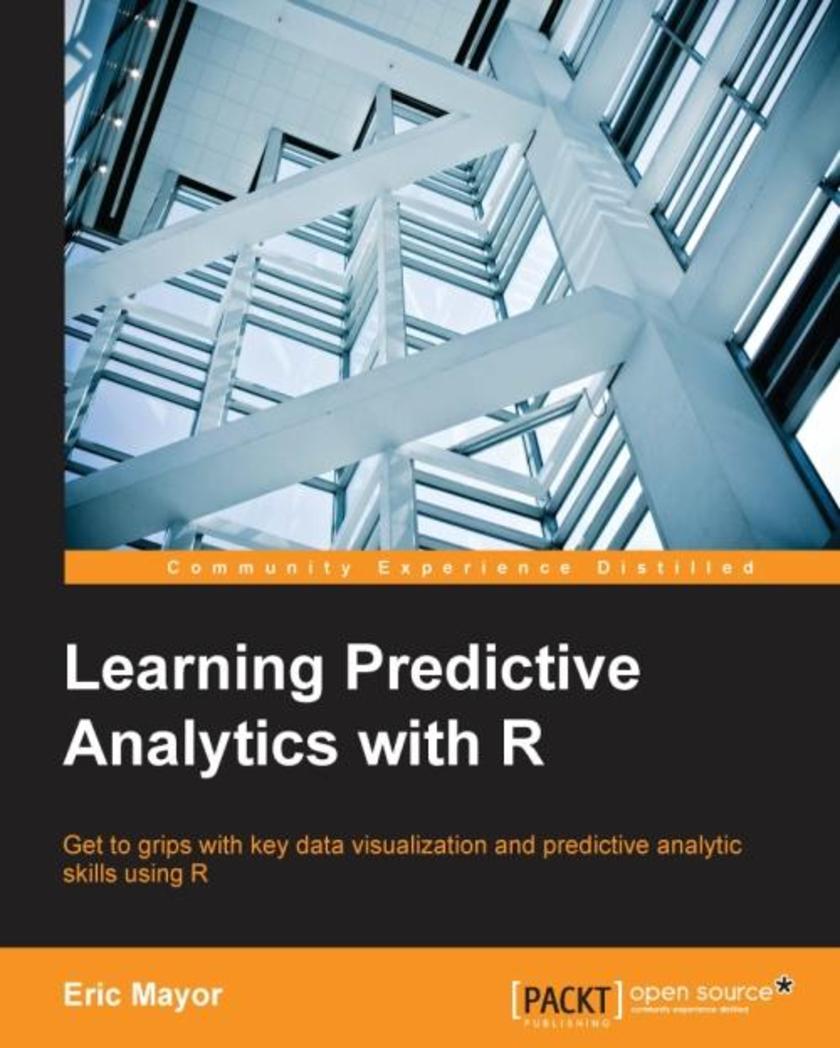
Learning Predictive Analytics with R
¥90.46
Get to grips with key data visualization and predictive analytic skills using R About This Book Acquire predictive analytic skills using various tools of R Make predictions about future events by discovering valuable information from data using R Comprehensible guidelines that focus on predictive model design with real-world data Who This Book Is For If you are a statistician, chief information officer, data scientist, ML engineer, ML practitioner, quantitative analyst, and student of machine learning, this is the book for you. You should have basic knowledge of the use of R. Readers without previous experience of programming in R will also be able to use the tools in the book. What You Will Learn Customize R by installing and loading new packages Explore the structure of data using clustering algorithms Turn unstructured text into ordered data, and acquire knowledge from the data Classify your observations using Na?ve Bayes, k-NN, and decision trees Reduce the dimensionality of your data using principal component analysis Discover association rules using Apriori Understand how statistical distributions can help retrieve information from data using correlations, linear regression, and multilevel regression Use PMML to deploy the models generated in R In Detail R is statistical software that is used for data analysis. There are two main types of learning from data: unsupervised learning, where the structure of data is extracted automatically; and supervised learning, where a labeled part of the data is used to learn the relationship or scores in a target attribute. As important information is often hidden in a lot of data, R helps to extract that information with its many standard and cutting-edge statistical functions. This book is packed with easy-to-follow guidelines that explain the workings of the many key data mining tools of R, which are used to discover knowledge from your data. You will learn how to perform key predictive analytics tasks using R, such as train and test predictive models for classification and regression tasks, score new data sets and so on. All chapters will guide you in acquiring the skills in a practical way. Most chapters also include a theoretical introduction that will sharpen your understanding of the subject matter and invite you to go further. The book familiarizes you with the most common data mining tools of R, such as k-means, hierarchical regression, linear regression, association rules, principal component analysis, multilevel modeling, k-NN, Na?ve Bayes, decision trees, and text mining. It also provides a de*ion of visualization techniques using the basic visualization tools of R as well as lattice for visualizing patterns in data organized in groups. This book is invaluable for anyone fascinated by the data mining opportunities offered by GNU R and its packages. Style and approach This is a practical book, which analyzes compelling data about life, health, and death with the help of tutorials. It offers you a useful way of interpreting the data that’s specific to this book, but that can also be applied to any other data.
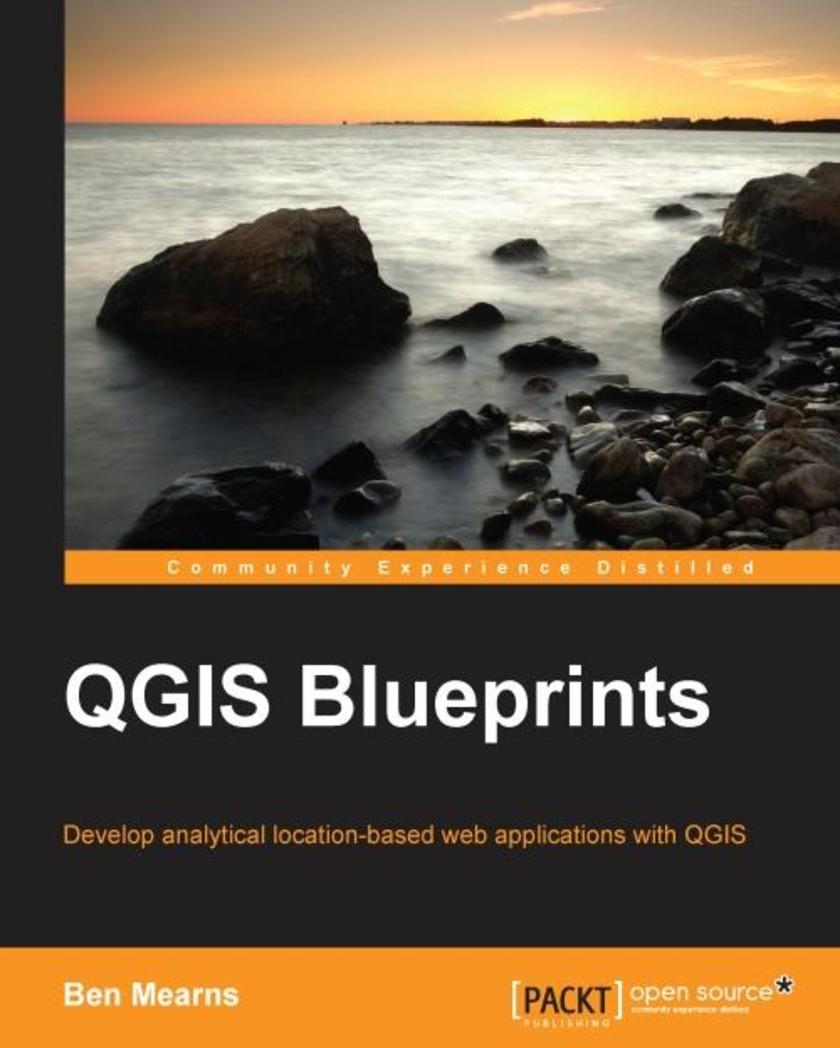
QGIS Blueprints
¥90.46
Develop analytical location-based web applications with QGIS About This Book Tame geographic information workflows with QGIS blueprints for smart web applications Create geographic web applications using QGIS and free/open source software Blueprints provide real-world applications covering many use cases Who This Book Is For This book encompasses relatively experienced GIS developers who have a strong grounding in the fundamentals of GIS development. They will have used QGIS before, but are looking to understand how to develop more complex, layered map applications that expose various data sets, utilize different visualizations, and are consumable (usable) by end users What You Will Learn Review geographic information principles and the application of these principles in the QGIS free/open source ecosystem Perform advanced analysis with site selection, hydrologic, and topological networks Build performant web applications by tile caching and generating static assets Provide collaborative editing capabilities for your team or community Develop custom and dynamic analysis and visualization capabilities Select the best components from desktop and web, for your use case Integrate it with social media and crowdsourcing In Detail QGIS, the world’s most popular free/open source desktop geographic information system software, enables a wide variety of use cases involving location – previously only available through expensive specialized commercial software. However, designing and executing a multi-tiered project from scratch on this complex ecosystem remains a significant challenge. This book starts with a primer on QGIS and closely related data, software, and systems. We’ll guide you through six use-case blueprints for geographic web applications. Each blueprint boils down a complex workflow into steps you can follow to reduce time lost to trial and error. By the end of this book readers should be able to build complex layered applications that visualize multiple data sets, employing different types of visualization, and give end users the ability to interact with and manipulate this data for the purpose of analysis. Style and approach This is a comprehensive guide to the application of QGIS and free/open source software in creating web applications from analysis. Step-by-step blueprints guide the reader through analytical and web development topics and designs.
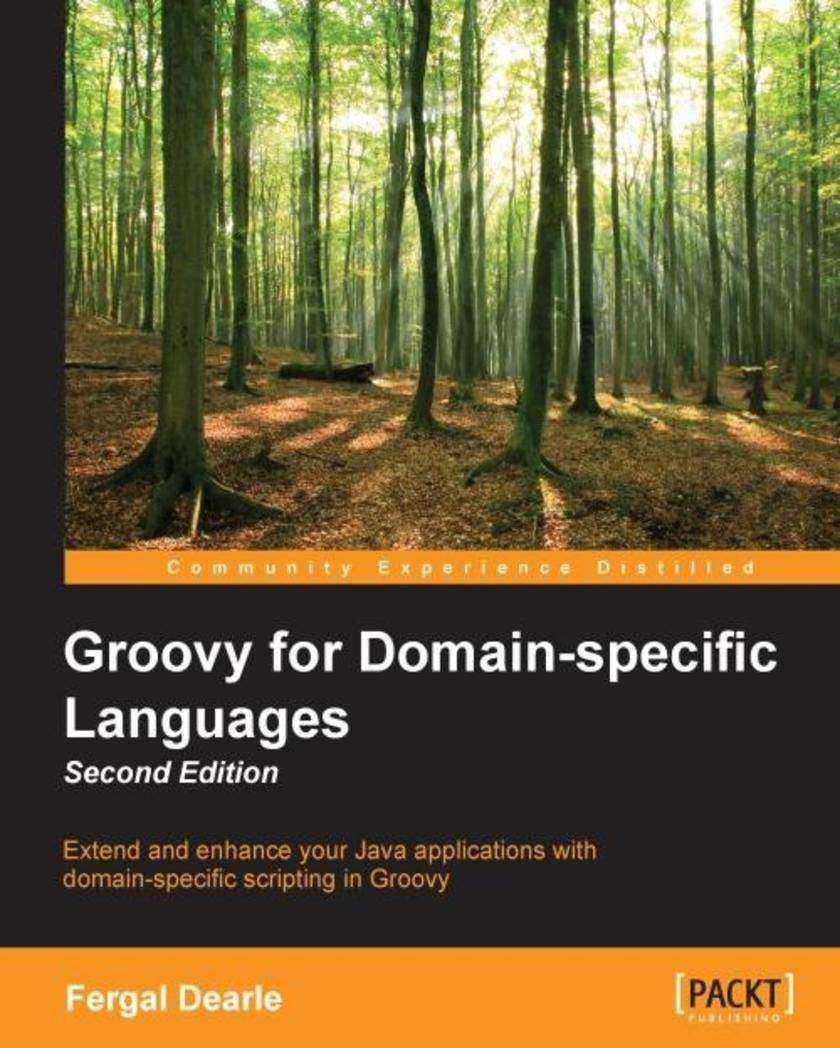
Groovy for Domain-specific Languages - Second Edition
¥90.46
Extend and enhance your Java applications with domain-specific *ing in Groovy About This Book Build domain-specific mini languages in Groovy that integrate seamlessly with your Java apps with this hands-on guide Increase stakeholder participation in the development process with domain-specific *ing in Groovy Get up to speed with the newest features in Groovy using this second edition and integrate Groovy-based DSLs into your existing Java applications. Who This Book Is For This book is for Java software developers who have an interest in building domain *ing into their Java applications. No knowledge of Groovy is required, although it will be helpful. This book does not teach Groovy, but quickly introduces the basic ideas of Groovy. An experienced Java developer should have no problems with these and move quickly on to the more involved aspects of creating DSLs with Groovy. No experience of creating a DSL is required. What You Will Learn Familiarize yourself with Groovy *ing and work with Groovy closures Use the meta-programming features in Groovy to build mini languages Employ Groovy mark-up and builders to simplify application development Familiarize yourself with Groovy mark-up and build your own Groovy builders Build effective DSLs with operator overloading, command chains, builders, and a host of other Groovy language features Integrate Groovy with your Java and JVM based applications In Detail The times when developing on the JVM meant you were a Java programmer have long passed. The JVM is now firmly established as a polyglot development environment with many projects opting for alternative development languages to Java such as Groovy, Scala, Clojure, and JRuby. In this pantheon of development languages, Groovy stands out for its excellent DSL enabling features which allows it to be manipulated to produce mini languages that are tailored to a project’s needs. A comprehensive tutorial on designing and developing mini Groovy based Domain Specific Languages, this book will guide you through the development of several mini DSLs that will help you gain all the skills needed to develop your own Groovy based DSLs with confidence and ease. Starting with the bare basics, this book will focus on how Groovy can be used to construct domain specific mini languages, and will go through the more complex meta-programming features of Groovy, including using the Abstract Syntax Tree (AST). Practical examples are used throughout this book to de-mystify these seemingly complex language features and to show how they can be used to create simple and elegant DSLs. Packed with examples, including several fully worked DSLs, this book will serve as a springboard for developing your own DSLs. Style and approach This book is a hands-on guide that will walk you through examples for building DSLs with Groovy rather than just talking about "metaprogramming with Groovy". The examples in this book have been designed to help you gain a good working knowledge of the techniques involved and apply these to producing your own Groovy based DSLs.
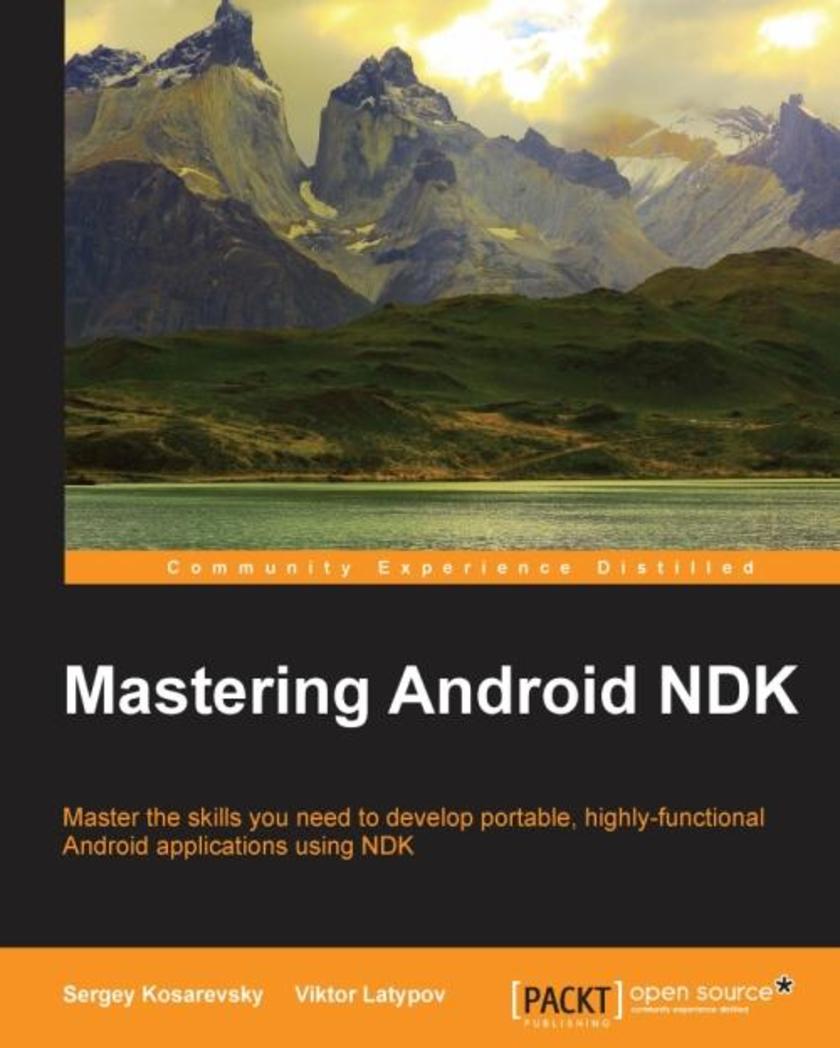
Mastering Android NDK
¥90.46
Master the skills you need to develop portable, highly-functional Android applications using NDK About This Book Develop portable games using Android NDK and debug them on your desktop Familiarise yourself with different popular C++ libraries on Android and use them in your games Write multi-threaded code with graphics, sound, networking, and resource storage Who This Book Is For If you want to leverage your C++ skills in mobile development and increase the performance of your Android applications, then this is the book for you. Knowledge of C or C++ is assumed, including pointer manipulation, multi-threading, object-oriented programming concepts, and the basics of C++11. It would be an added advantage if you know how to develop applications without any IDE. What You Will Learn Explore popular C++ libraries and use them on Android Write portable, multithreaded native networking code Create portable audio framework using OpenAL Implement portable rendering framework using OpenGL ES 3 Debug mobile applications on your desktop machine Access resources from APK archives Render text with FreeType In Detail Android NDK is used for multimedia applications that require direct access to system resources. NDK is also the key for portability, which in turn allows a reasonably comfortable development and debugging process using familiar tools such as GCC and Clang toolchains. This is a hands-on guide to extending your game development skills with Android NDK. The book takes you through many clear, step-by-step example applications to help you further explore the features of Android NDK and some popular C++ libraries and boost your productivity by debugging the development process. Through the course of this book, you will learn how to write portable multi-threaded native code, use HTTP networking in C++, play audio files, use OpenGL ES 3, and render high-quality text. Each chapter aims to take you one step closer to building your application. By the end of this book, you will be able to create an engaging, complete gaming application. Style and approach This book adopts a step-by-step approach and each chapter is based on the material from the previous ones. The book focuses on putting to your knowledge of C++ use while you develop Android applications of your own.
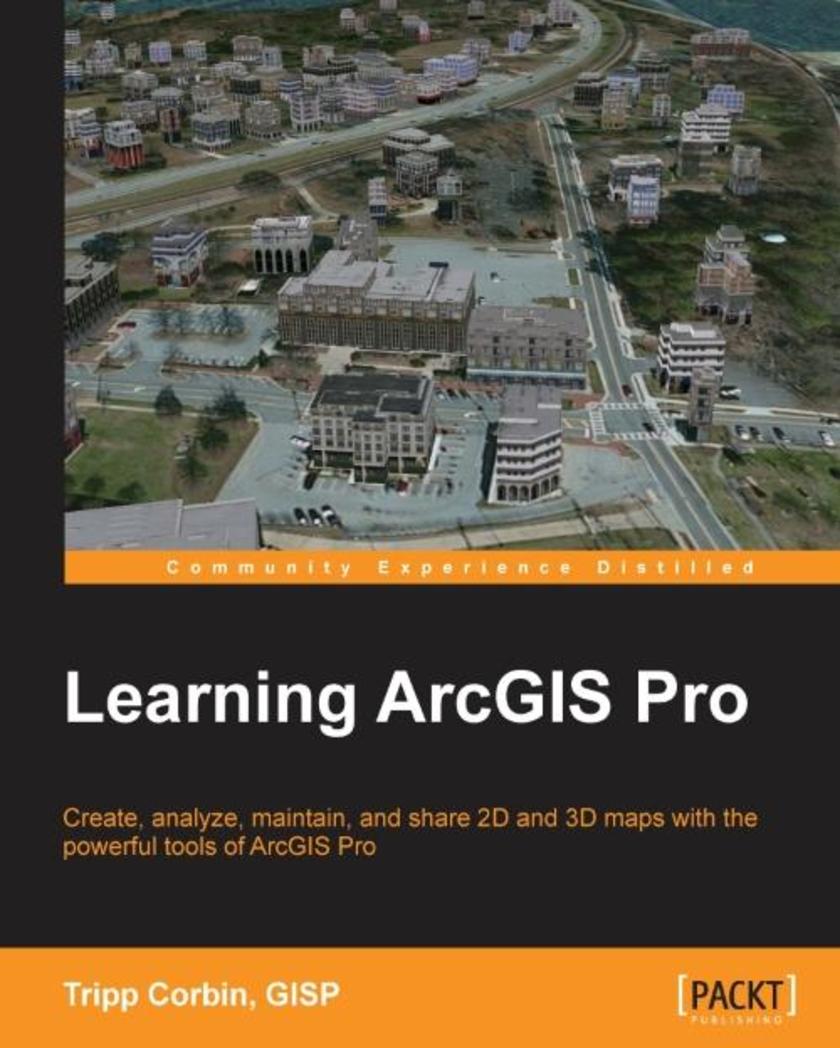
Learning ArcGIS Pro
¥90.46
Create, analyze, maintain, and share 2D and 3D maps with the powerful tools of ArcGIS Pro About This Book Visualize GIS data in 2D and 3D maps Create GIS projects for quick and easy access to data, maps, and analysis tools A practical guide that helps to import maps, globes, and scenes from ArcMap, ArcScene, or ArcGlobe Who This Book Is For This book is for anyone wishing to learn how ArcGIS Pro can be used to create maps and perform geospatial analysis. It will be especially helpful for those that have used ArcMap and ArcCatalog in the past and are looking to migrate to Esri’s newest desktop GIS solution. Though previous GIS experience is not required, you must have a solid foundation using Microsoft Windows. It is also helpful if you understand how to manage folders and files within the Microsoft Windows environment. What You Will Learn Install ArcGIS Pro and assign Licenses to users in your organization Navigate and use the ArcGIS Pro ribbon interface to create maps and perform analysis Create and manage ArcGIS Pro GIS Projects Create 2D and 3D maps to visualize and analyze data Author map layouts using cartographic tools and best practices to show off the results of your analysis and maps Import existing map documents, scenes, and globes into your new ArcGIS Pro projects quickly Create standardized workflows using Tasks Automate analysis and processes using ModelBuilder and Python In Detail ArcGIS Pro is Esri’s newest desktop GIS application with powerful tools for visualizing, maintaining, and analyzing data. ArcGIS Pro makes use of the modern ribbon interface and 64-bit processing to increase the speed and efficiency of using GIS. It allows users to create amazing maps in both 2D and 3D quickly and easily.This book will take you from software installation to performing geospatial analysis. It is packed with how-to’s for a host of commonly-performed tasks. You will start by learning how to download and install the software including hardware limitations and recommendations. Then you are exposed to the new Ribbon interface and how its smart design can make finding tools easier.After you are exposed to the new interface, you are walked through the steps to create a new GIS Project to provide quick access to project resources. With a project created, you will learn how to construct 2D and 3D maps including how to add layers, adjust symbology, and control labeling. Next you will learn how to access and use analysis tools to help you answer real-world questions.Lastly, you will learn how processes can be automated and standardized in ArcGIS Pro using Tasks, Models, and Python Scripts.This book will provide an invaluable resource for all those seeking to use ArcGIS Pro as their primary GIS application or for those looking to migrate from ArcMap and ArcCatalog. Style and approach This book includes detailed explanations of the GIS functionality and workflows in ArcGIS Pro. These are supported by easy-to-follow exercises that will help you gain an understanding of how to use ArcGIS Pro to perform a range of tasks.
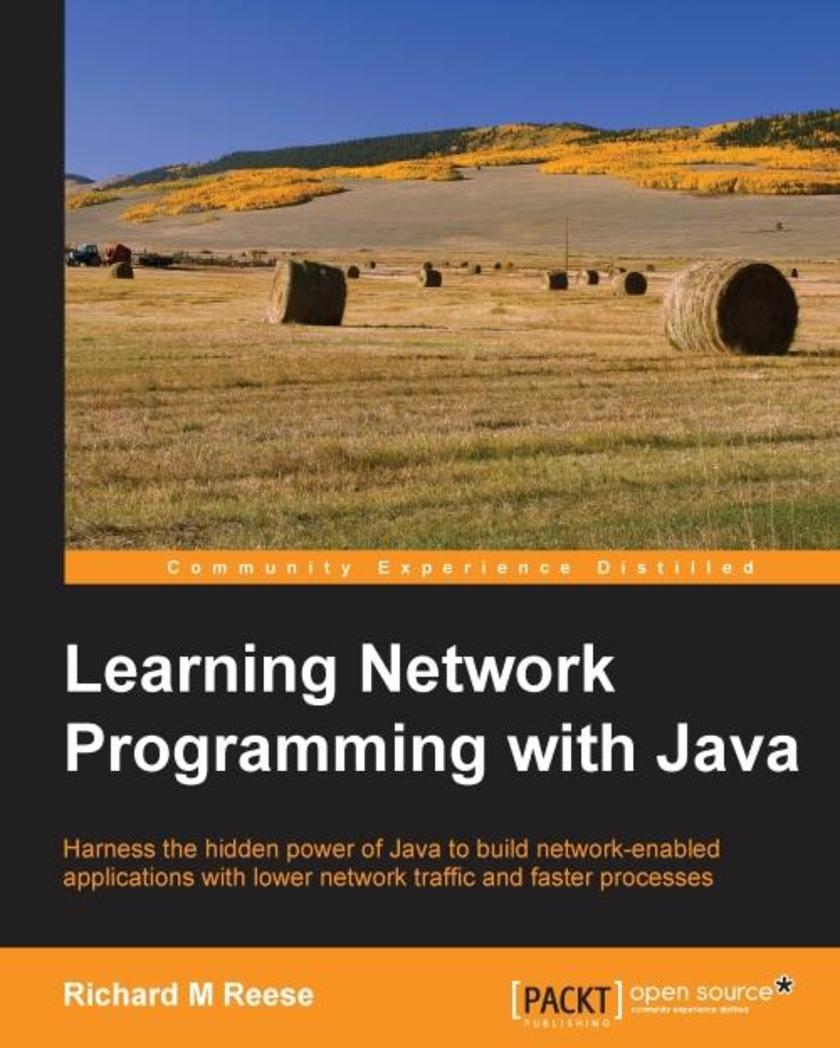
Learning Network Programming with Java
¥90.46
Harness the hidden power of Java to build network-enabled applications with lower network traffic and faster processes About This BookLearn to deliver superior server-to-server communication through the networking channelsGain expertise of the networking features of your own applications to support various network architectures such as client/server and peer-to-peerExplore the issues that impact scalability, affect security, and allow applications to work in a heterogeneous environmentWho This Book Is ForLearning Network Programming with Java is oriented to developers who wish to use network technologies to enhance the utility of their applications. You should have a working knowledge of Java and an interest in learning the latest in network programming techniques using Java. No prior experience with network development or special software beyond the Java SDK is needed. Upon completion of the book, beginner and experienced developers will be able to use Java to access resources across a network and the Internet.What You Will LearnConnect to other applications using socketsUse channels and buffers to enhance communication between applicationsAccess network services and develop client/server applicationsExplore the critical elements of peer-to-peer applications and current technologies availableUse UDP to perform multicastingAddress scalability through the use of core and advanced threading techniques Incorporate techniques into an application to make it more secure Configure and address interoperability issues to enable your applications to work in a heterogeneous environment In Detail Network-aware applications are becoming more prevalent and play an ever-increasing role in the world today. Connecting and using an Internet-based service is a frequent requirement for many applications. Java provides numerous classes that have evolved over the years to meet evolving network needs. These range from low-level socket and IP-based approaches to those encapsulated in software services. This book explores how Java supports networks, starting with the basics and then advancing to more complex topics. An overview of each relevant network technology is presented followed by detailed examples of how to use Java to support these technologies. We start with the basics of networking and then explore how Java supports the development of client/server and peer-to-peer applications. The NIO packages are examined as well as multitasking and how network applications can address practical issues such as security. A discussion on networking concepts will put many network issues into perspective and let you focus on the appropriate technology for the problem at hand. The examples used will provide a good starting point to develop similar capabilities for many of your network needs. Style and approach Each network technology’s terms and concepts are introduced first. This is followed up with code examples to explain these technologies. Many of the examples are supplemented with alternate Java 8 solutions when appropriate. Knowledge of Java 8 is not necessary but these examples will help you better understand the power of Java 8.
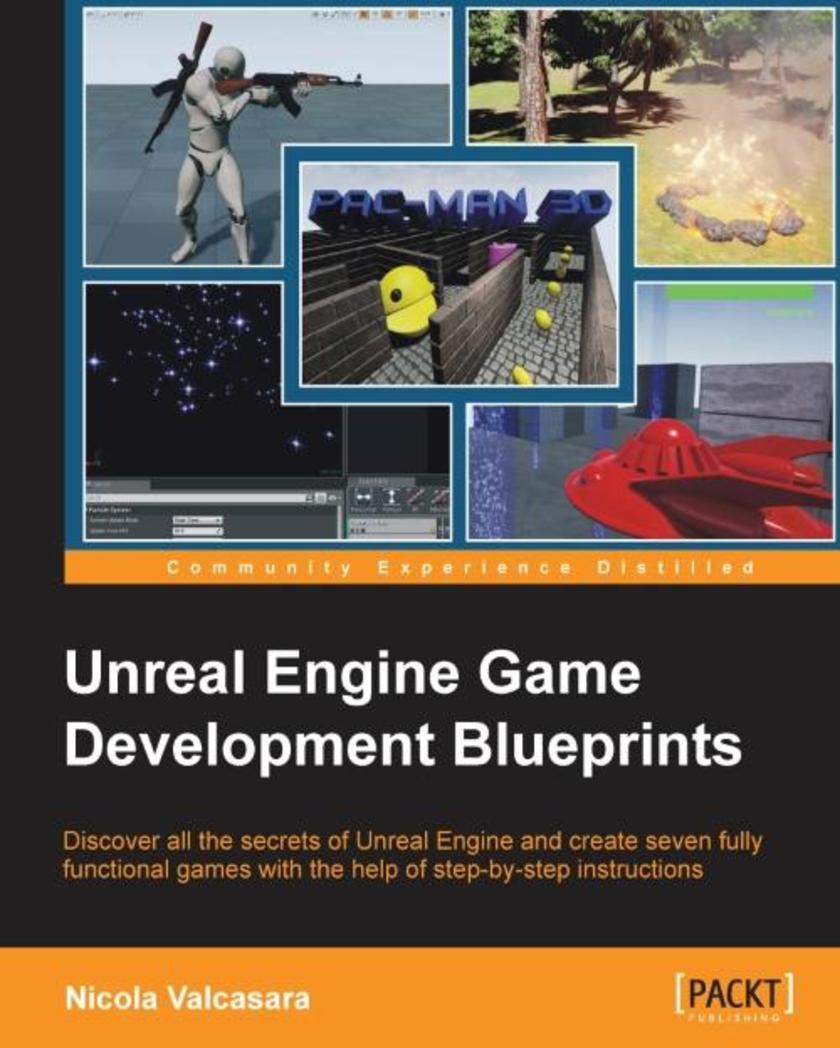
Unreal Engine Game Development Blueprints
¥90.46
Discover all the secrets of Unreal Engine and create seven fully functional games with the help of step-by-step instructions About This Book Understand what a Blueprint is and how to create a complex visual *ing code Discover the infinite possibilities that Unreal Engine offers, and understand which tool to use, where and when Learn to think like a real game developer in order to create enjoyable and bug-free games using this comprehensive and practical handbook Who This Book Is For This book is ideal for intermediate level developers who know how to use Unreal Engine and want to go through a series of projects that will further their expertise. Working knowledge of C++ is a must. What You Will Learn Write clean and reusable Blueprint *s Develop any kind of game you have in mind, following the rules used by experts Move through Unreal Engine 4, always knowing what you are doing and where to find the right tool for your needs Integrate C++ code into your projects using Visual Studio and the tools that Unreal provides Extricate between classes, nodes, interfaces, macros, and functions Work with different types of assets, from 3D objects to audio sources, from UI buttons to animations Explore all the aspects of the game logic—collisions, navigation meshes, matinees, volumes, events, and states In Detail With the arrival of Unreal Engine 4, a new wonderful tool was born: Blueprint. This visual *ing tool allows even non-programmers to develop the logic for their games, allowing almost anyone to create entire games without the need to write a single line of code. The range of features you can access with Blueprint * is pretty extensive, making it one of the foremost choices for many game developers. Unreal Engine Game Development Blueprints helps you unleash the real power of Unreal by helping you to create engaging and spectacular games. It will explain all the aspects of developing a game, focusing on visual *ing, and giving you all the information you need to create your own games. We start with an introductory chapter to help you move fluidly inside the Blueprint user interface, recognize its different components, and understand any already written Blueprint *. Following this, you will learn how to modify generated Blueprint classes to produce a single player tic-tac-toe game and personalize it. Next, you will learn how to create simple user interfaces, and how to extend Blueprints through code. This will help you make an informed decision between choosing Blueprint or code. You will then see the real power of Unreal unleashed as you create a beautiful scene with moving, AI controlled objects, particles, and lights. Then, you will learn how to create AI using a behavior tree and a global level Blueprint, how to modify the camera, and how to shoot custom bullets. Finally, you will create a complex game using Blueprintable components complete with a menu, power-up, dangerous objects, and different weapons. Style and approach This is an easy-to-follow guide full of practical game examples. Each chapter contains step-by-step instructions to build a complete game and each game uses a different tool in order to cover all the topics in a detailed and progressive manner.
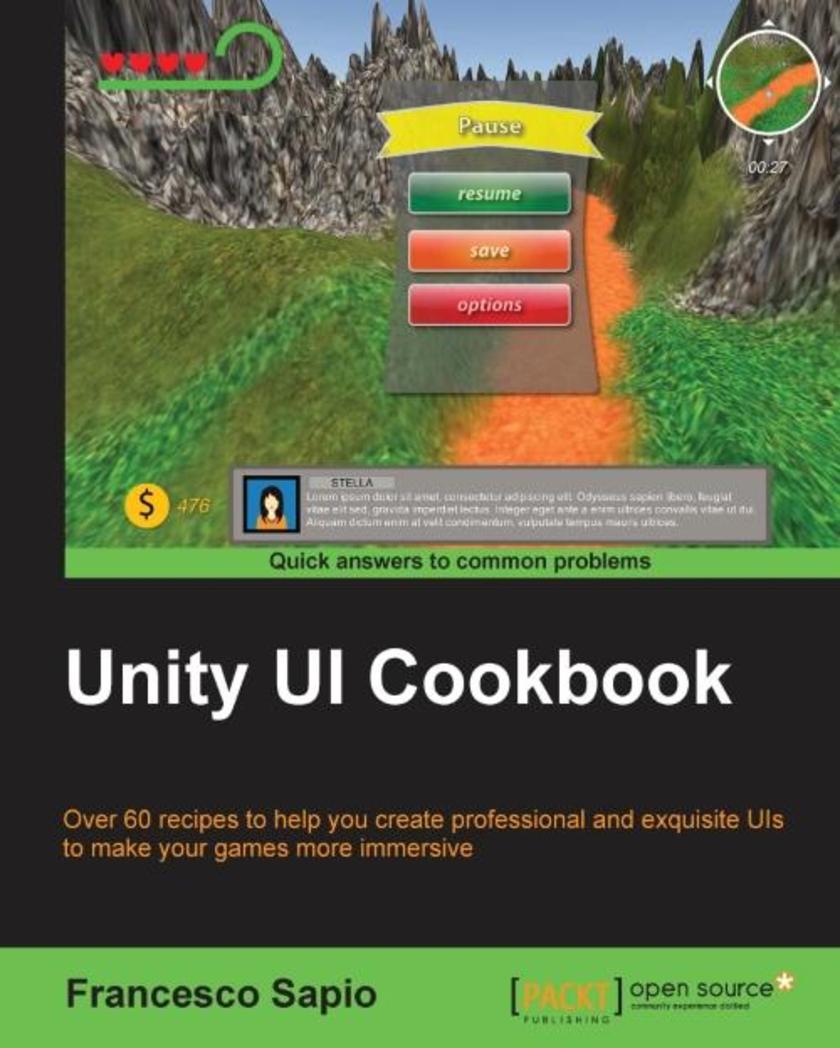
Unity UI Cookbook
¥90.46
Over 60 recipes to help you create professional and exquisite UIs to make your games more immersive About This Book Design and develop interactive and professional user interfaces (UIs) for games in Unity Discover how to implement and deal with various in-game UI elements that will impress your players This practical recipe guide will help you to efficiently create powerful and remarkable UIs using C# code Who This Book Is For If you are a game developer with some experience in Unity and C# and want to create the best interactive experience fast and intuitively, then this book is for you. If you are an intermediate game developer or an expert, these recipes will help you bring out the power of the new UI Unity system. What You Will Learn Implement different kinds of counters and healthbars Deal with timers and find out how to format them Animate and vivify UI elements Handle runtime customizations Add complex Head-up displays (HUDs) Design and implement 3D UIs Integrate minimaps in the UI In Detail With the increasing interest in game development, it's essential to design and implement a UI that reflects the game settings and shows the right information to the player. The Unity system is used to create complex and aesthetically pleasing user interfaces in order to give a professional look and feel to a game. Although the new Unity UI system is powerful and quite easy to use, by integrating it with C# *s, it's possible to realize the potential of this system and bring an impressive UI to games.This guide is an invaluable collection of recipes if you are planning to use Unity to develop a game. Starting with the basic concepts of the UI components, we’ll take you all the way through to creating complex interfaces by including animations and dynamics elements. Based on real-world problems, these recipes will start by showing you how to make common UI elements such as counters and healthbars. You will then get a walkthrough of how to manage time using timers, and will learn how to format them. You will move on to decorating and animating the UI elements to vivify them and give them a professional touch. Furthermore, you will be guided into the 3D UI world and into HUD *ing. Finally, you will discover how to implement complex minimaps in the interface.Style and approach Interactive, easy-to-follow recipes will help you create and implement UIs that make gaming an exhilarating experience.




 购物车
购物车 个人中心
个人中心



